On this page I have listed the gear that I personally own and have tested (and would happily recommend to other Sony Alpha owners). In the comments alongside each product I have either added a review link or listed my reasons for choosing this product and why it would find itself going into one of my six camera bags for a particular shoot or project I am working on. I have also provided links where you can purchase the product either from B & H Photo in the USA or Sony in Australia.
Note > I do not review gear for a living and I am not interested in reviewing equipment unless I am considering adding it to, or replacing, my existing equipment.
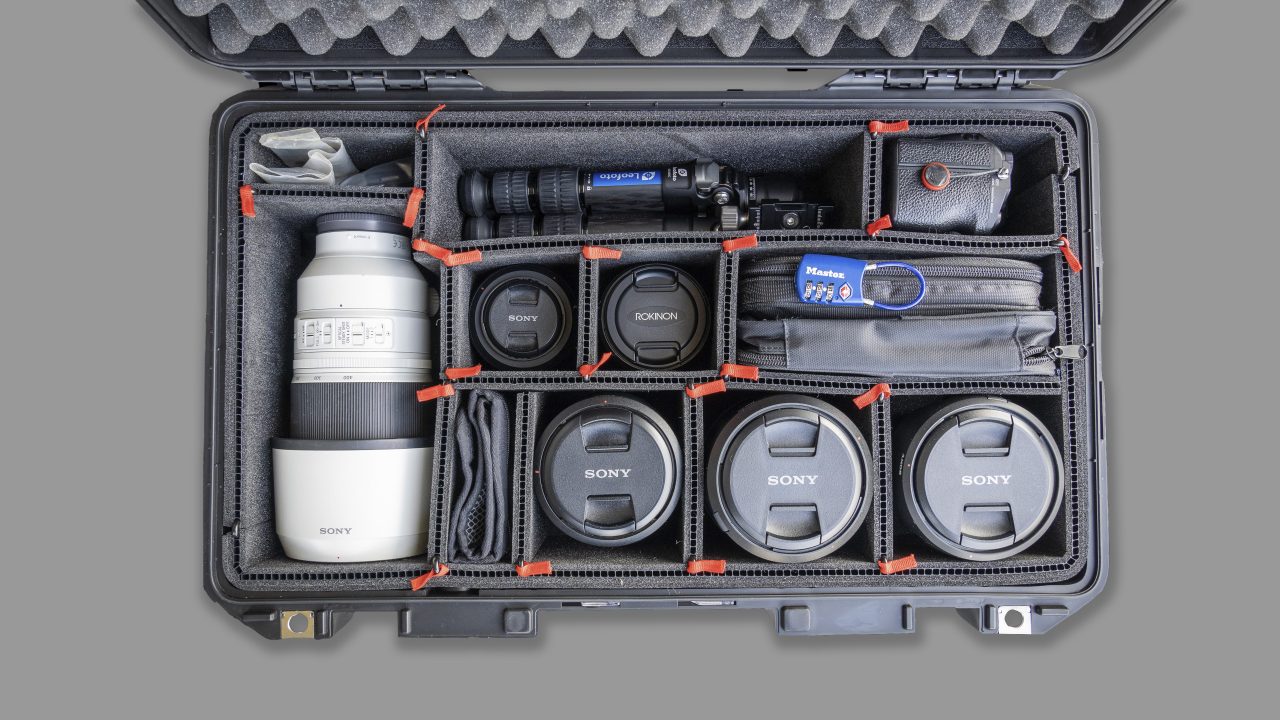
I often pack 7KG or 15.5 lbs of equipment (including the bag) as a ‘carry-on’ piece of luggage when flying. The bag, and the gear in the bag, changes depending on the shoot. I don’t pack more than 7KG in a single bag unless the shoot requires lighting equipment. I rarely travel with lighting equipment as I don’t work with an assistant. I sometimes pack additional equipment in a laptop bag that will go under the seat in front of me if the airline allows this. If I am gone for more than a month, and the nature of the shoot is very diverse, I have checked overflow equipment into a Pelican case. I usually prefer to use prime lenses compared to standard or mid-range zoom lenses and I rarely carry a large tripod (preferring short and light tripods as I usually head-hold landscapes in low ambient light).
WARNING: Beware – U.S. citizens traveling outside of the U.S.A. will encounter the 7 KG (15.5 lbs) weight limit when transferring to European and Asian airlines in addition to the size limitations.

Cameras
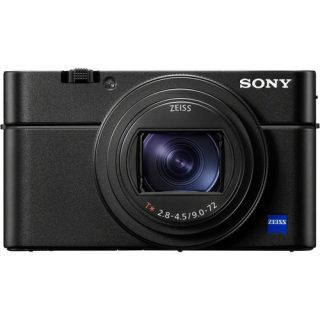 |
RX100: There are seven versions of this pocket-rocket. The 1-inch sensor is one of Sony’s most remarkable sensors in recent years. It is used by Canon for its RX100 clone. Combine the quality of this sensor with a stellar wide-aperture Carl Zeiss zoom lens and this compact camera can match entry-level DSLRs for quality. It has a very impressive build quality and is reassuringly solid. As the lens withdraws into the body this camera can easily be put in a jacket pocket or clutch bag. The Mark III, IV, V, VI and VlI models have the pop-up EVF – which is worth paying the extra money for. Most compacts these days don’t capture images that are too different to smart phones but this camera is the exception to the rule. It is the pro-photographer’s compact. How Sony crammed all of this into this little bundle-of-joy is a miracle.Flickr Album of Images Captured with the RX100: https://flic.kr/s/aHskf6FRus
RX100 VII Review: https://youtu.be/d9rOUUPWVQI |
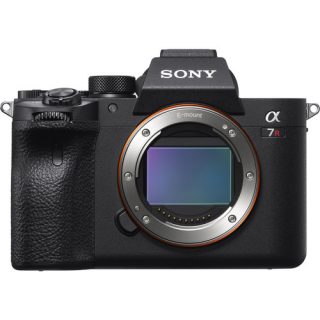 |
Owned but now Sold
My previous high-resolution full-frame camera for capturing high-quality images. It has the best dynamic range of any full-frame camera and the improved AF tracking seen on the A9 cameras. |
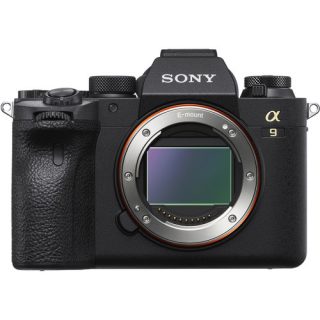 |
Owned but now Sold
My previous Full-Frame Camera for capturing fast action/sports images. This camera had many workflow improvements over the original A9 but the image sensor and image quality is the same as the original A9. |
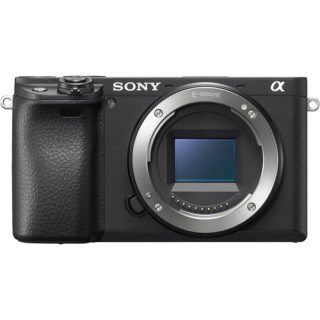 |
Owned but now Sold
The first alpha camera to feature the advanced Real-time AF Tracking. This offers the best value if you don’t need the SteadyShot Inside and Z series battery of the A6600 camera. |
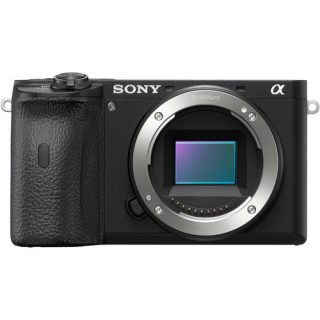 |
Featuring SteadyShot Inside and the Z series battery this my current premium quality APS-C camera.
|
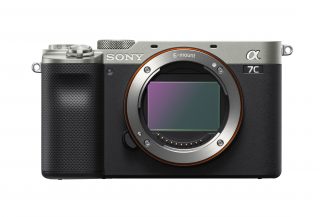 |
The Alpha 7C is the smallest full-frame Interchangeable lens compact camera. It uses the same backlit sensor as the A7III but has a host of updated firmware features including AF Tracking (replacing the older Lock on AF seen on the A7III) + better low light AF (-4.00 EV). It’s body design features a flip-out vari-angle monitor and the updated multi interface shoe that can use the digital audio signal from Sony’s digital shotgun microphone. The FE 28-60 kit lens is remarkably sharp, small and lightweight so it is worth considering purchasing the A7C with the kit lens.
|
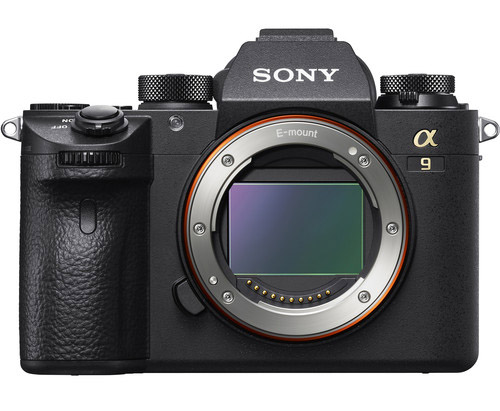 |
Owned but now SoldThe A9 is the fastest mirrorless camera in Sony’s E-Mount lineup. It is a no compromise 20 frames per second camera built for sports, action and fast-moving wildlife. Although I now own the A9II the A9 still offers great value for money for photographers wanting to shoot fast action.
My extended review of why I use this camera can found here: https://www.markgaler.com/sony-a9-review An album of High Res images can be viewed here: https://flic.kr/s/aHskWnTPXh |
Full Frame Lenses
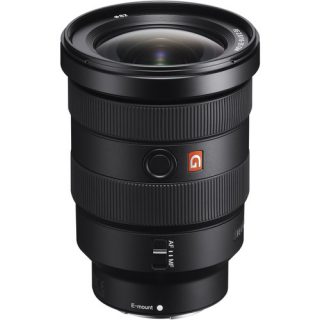 |
FE 16-35 F/2.8 GM: This is one of my go-to lens for Landscape work. It has an impressive 16 mm ultra wide-angle field of view when zoomed out and is very sharp corner-to-corner at all apertures. It has OSS (Optical Steady Shot) which makes hand-held work possible in low ambient light. It’s widest aperture is f/2.8 which makes Astro possible.
|
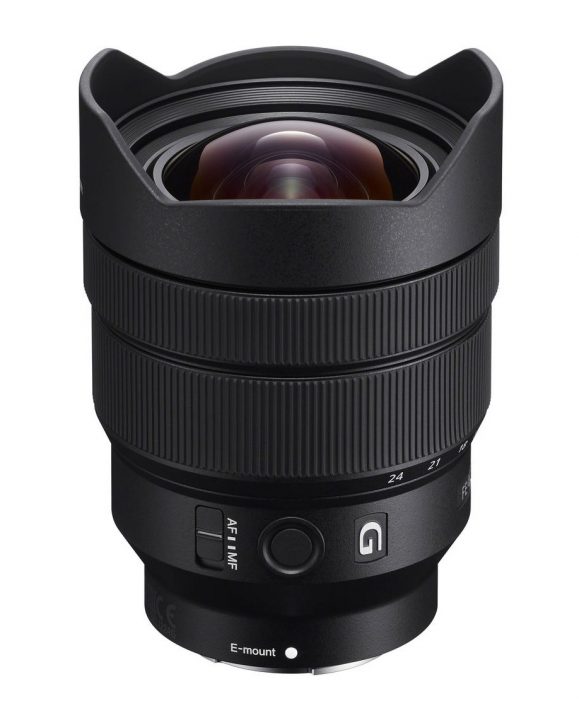 |
FE 1224 F/4 G: This is Sony’s Ultra Wide Aperture Zoom lens. It has an impressive 12 mm ultra wide-angle field of view when zoomed out, and is very sharp with minimal distortion. It’s widest aperture is f/4, but this lens does most of its work at f/11 or f/16 for landscape work, in order to increase the depth of field and shoot at the sharpest possible aperture. The lens hood is fixed and there is no thread on the front of the lens for attaching ND or Polarising filters. I use this lens in conjunction with a NiSi S5 filter holder that takes two 15mm square filters and a circular polarising filter. Flickr Album of Images Captured with the FE 4/12-24 G: https://flic.kr/s/aHsm35d9BY
A short movie review can be seen here: https://youtu.be/CBSiaGvLX9c
|
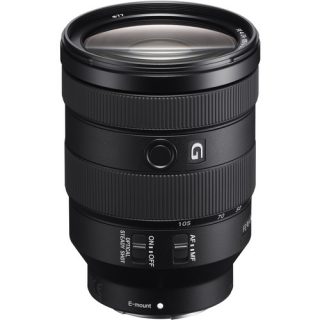 |
As I mainly use Sony’s 24, 35, 55 & 85 prime lenses I have no need for the FE 24-70 F/2.8 GM. If I do have a need for a zoo that covers this focal range I have chosen to work with the smaller and lighter FE 24-105 F/4 G.
|
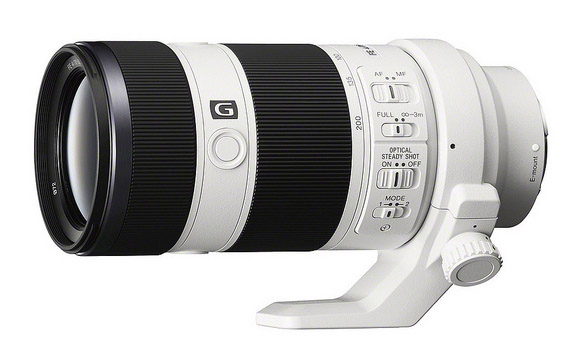 |
FE70200F4G: This is one of may favourite Sony lenses. It delivers all of the performance that professional photographers expect from this classic telephoto zoom range. It’s f/4 aperture keeps the weight down so you can easily shoot with this lens all day without having to look for the support of a monopod. The lens comes with a collar that allows you to attach the camera/lens combo to a tripod or monopod at its centre of gravity. The lack of f/2.8 is not a concern for me, as images captured at f/4 or f/5.6 with this lens have plenty of background blur when zoomed in. It has a useful 72mm filter thread that is shared with the FE 1635 F4 (one set of filters covering both zooms). Flickr Album of Images Captured with the FE70200F4: https://flic.kr/s/aHsk6AdrYU
|
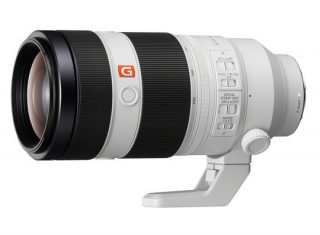 |
FE 100-400 GM OSS: This is the perfect companion lens for the A7RII, A7RIII and A9 cameras when you need maximum reach for sports, action and wildlife. This lens is fast and very sharp at its maximum aperture. When shooting in crop mode on the 42.4 megapixel cameras it provides an equivalent focal length of 600mm while capturing 18 Megapixel images. Alternatively it can be used with the A9 and 1.4X Teleconverter for a reach of 560mm (840mm in APS-C mode).
An album of High Res images captured with the FE 100-400 GM can be viewed here: https://flic.kr/s/aHskYWnqJR An album of High Res images captured with the FE 100-400 GM and 1.4X Teleconverter can be viewed here: https://flic.kr/s/aHsm1ZoFPW |
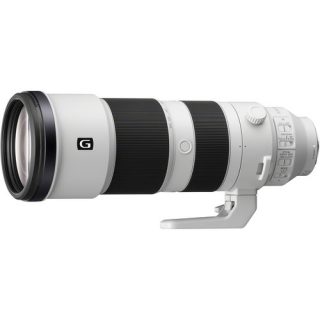 |
FE 200-600 G OSS: The lens I reach for when I need maximum reach.
|
|
FE 20 G & FE 24 GM |
FE 20 F/1.8 G
The build quality of the 20mm lens is very similar to the FE 24 F/1.4 GM. If you already have the 24mm focal length covered by a zoom then you may lean towards owning the 20mm prime as an alternative to owning, or traveling with, the FE 16-35 F/2.8 GM FE 24 F/1.4 GM |
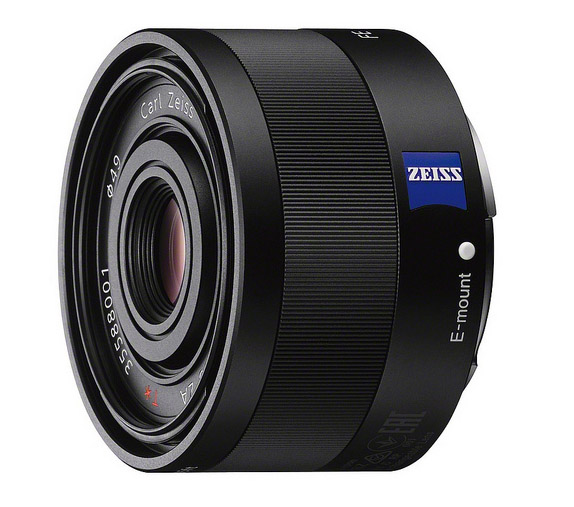 |
SEL35F28Z: This is the smallest and lightest FE lens, so if you need to travel light this is the go-to lens. It is one of the first two native Zeiss primes available and was received with excellent reviews. It is very very sharp and is the classic focal length for street photography. I hardly ever travel without this lens in the kit. It is usually attached to the camera as the ‘standard’ lens before swapping out to another lens. There are f/1.4 and f/1.8 35mm lenses in Sony’s lineup for photographer’s who need to isolate a subject by blurring the background. Although the 1.4 is sharper, it does pack a lot of extra weight to achieve the very bright f/1.4 aperture. This lens has a very compact lens hood design that keeps the total size down. Some users who don’t care for the look of this design and replace it with an aftermarket product. Filters can be attached either to the front the lens hood or behind the lens hood using the more common 49mm thread that is shared with the FE 55 F1.8. Flickr Album of Images Captured with the FE35F28ZA: https://flic.kr/s/aHska3AYH7 |
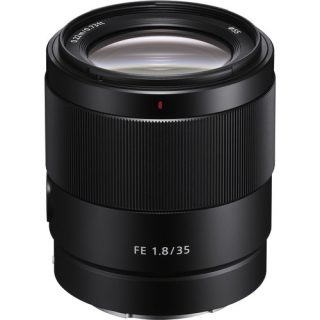 |
The 35mm focal length is a classic focal length for street photography and environmental portraits (full length). This lens is fast focusing and sharp wide open. It’s not quite a small as the FE 35 F/2.8 ZA but does have a one and third stop advantage and a focus hold button on the lens.
|
 |
SEL 55 F18 ZA: This is one of the first two Zeiss primes released with the A7 cameras back in 2013. It was tested as one of the sharpest AF primes ever made. It has had excellent reviews from anyone who has tested or owned this very sharp lens. Although it is more expensive than the Nikon or Canon equivalents, it is also out of the ball park in terms of optical quality. It has been compared with the likes of the Carl Zeiss Otus lens which is more than double the price of this lens. Not all wide aperture lenses are sharp wide open, but this FE 55 is sharp at its widest aperture of f/1.8. This is great for isolating a full length portrait from their background. Flickr Album of Images Captured with the FE55F18ZA: https://flic.kr/s/aHsk9h7RVS |
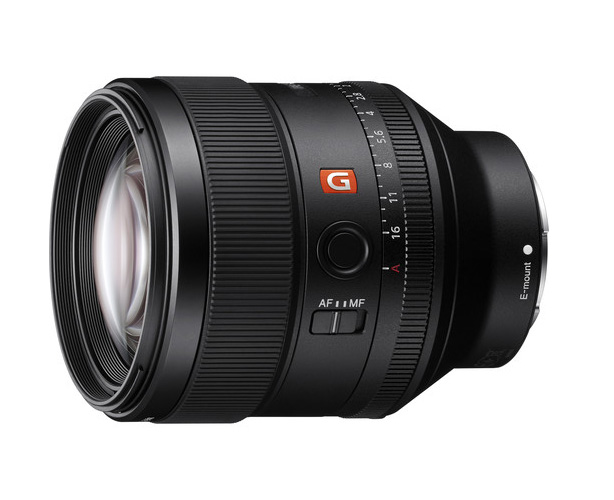 |
The 85mm wide aperture prime is one of my favourite pieces of glass. This 85 mm prime is a no-compromise lens that has class leading bokeh and is razor sharp. This lens has an 11-blade circular diaphragm to produce smooth, soft-edged booked – even when the aperture is closed down slightly. This sets it apart from some of the competitor lenses that have octagonal apertures. The G Master branding indicates it is one of Sony’s premium lenses. Flickr Album of Images Captured with the FE85F14GM: https://www.flickr.com/gp/markgaler/1T6vZ0 A movie review of the lens can be seen here: https://youtu.be/c-rp9OHsQaI |
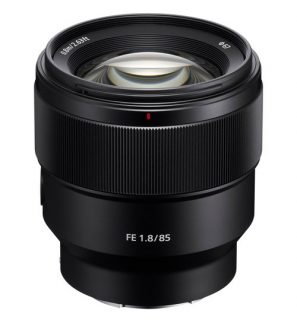 |
SEL85F18: This has replaced the Batis 1.8/85 in my camera bag when I am seeking to travel light. It is just as sharp as the Batis (even when used at its maximum aperture) and is lighter. Along with the FE 28 F/2 It is one of Sony’s best value prime lenses. I also travel with this lens when I am using the A6500 as it makes an excellent 135mm equivalent prime lens for Sony’s crop sensor (APS-C) E-Mount cameras. Flickr Album of Images Captured with the FE85F18: https://flic.kr/s/aHsm5cGh5T |
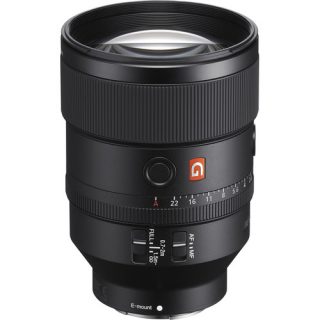 |
My favourite full-frame prime. This lens will often be seen as a portrait lens by many photographers but Sony added the fast dual XD linear motors seen in its pro sports lenses. This enables the lens to shoot fast action with shallow depth of field for times when you don’t need the reach of the long telephoto lenses.The 135 is about as optically perfect as a lens can be. It is razor sharp wide open and does not have any of the tell-tale colour fringing issues that most wide aperture lenses produce when used wide open.
|
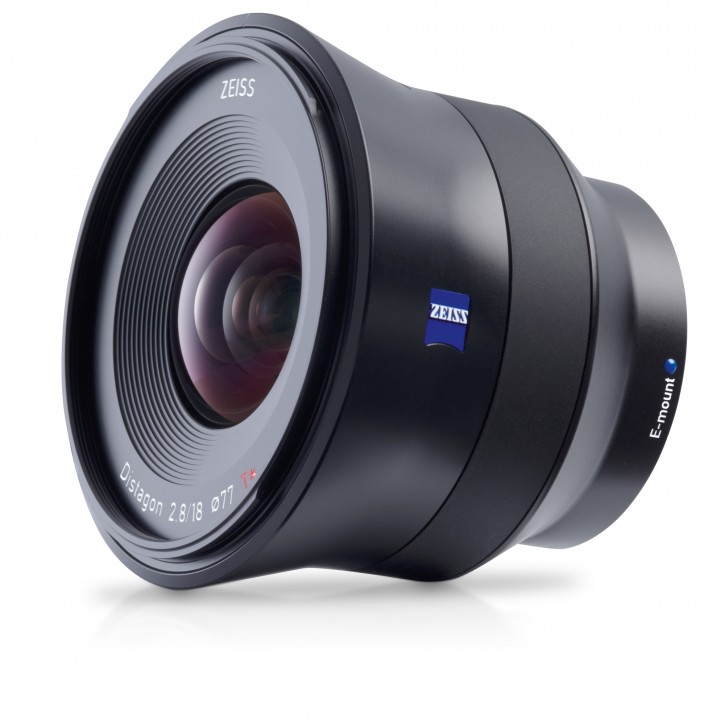 |
OWNED – STOLEN and NOT REPLACED
The Zeiss Batis Prime lenses are native E-Mount lenses (no adapter is required). AF Performance is not compromised and optical performance is excellent. I use the excellent 18mm f/2.8 as an alternative to the Sony Zeiss 16-35 f/4 zoom when I am trying to keep the weight of my camera bag to a minimum. It is not quite as wide as the 16mm end of the zoom but has excellent sharpness and takes 77mm screw on ND filters without a problem. It is not a small lens but it weighs in at just 11.64 oz (330 g).An album of UHD images captured with the Batis 18 can be seen here: https://flic.kr/s/aHskDTjYn1 A movie review of the lens can be seen here: https://youtu.be/-__3A4V5ino |
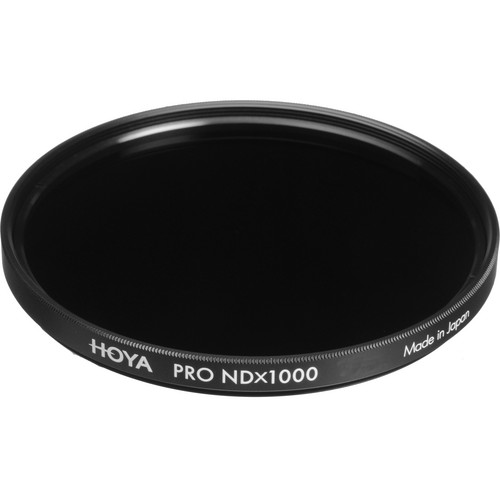 |
The only ‘screw-on’ filters I use on a regular basis are ND filters (I will use the NiSi filters systems when I need to use these in conjunction with polarising and/or graduated filters). I prefer to use fixed density (rather than variable) so will use one of three ND filters for my FE 1635 F4, FE 35 F1.4 and Zeiss 2.8/18 lenses. These ND filters will allow me to either shoot movies with the aperture wide open in bright ambient conditions, while maintaining a 1/50 second shutter speed, or create long exposures (30 seconds and longer) at dawn and dusk. The 72 mm filter thread of the FE 16-35 ZA is also shared by the FE70200F4 G. The Zeiss 2.8/18 uses a 77mm thread which is shared by the FE 100-400 GM and FE 24-105 G lenses. The Hoya ProND 1000 extends the shutter speed by approximately 10 stops, e.g. a 1/30-second exposure without the filter extends the shutter speed to 30 Seconds with the filter attached. The Hoya ProND 200 reduces the light by 7.6 stops. I often use a 77mm ND200 filter with the Batis 2.8/18 and if I need to reduce light/extend the shutter speed even further I can add an additional ProND 8 filter. The bell-shaped housing of the Batis enables two filters to be used without clipping the corners of the image. I find it preferable to use a weaker, rather than stronger, ND filter when I can and carry two or three weaker ND filters (rather than one of a higher density) as this gives me more flexibility to choose my desired shutter speed. The Hoya ProND 64 is a 6-Stop ND filter, e.g. In bright sunlight I would normally have to stop down to f/16 to maintain an appropriate shutter speed of 1/50 second when shooting movies. If I attach the Pro ND 64 filter I will be able to open the aperture to f/2 in order to blur the background and isolate my subject. I find this strength of filter is ideal for videographers who only want to carry a single ND filter. If the reduction of light is a little too much when using the ND64 the photographer can simply raise the ISO to 200 or 400. 72mm ProND8 Filter 72mm ProND64 Filter 72mm ProND200 |
APS-C Lenses
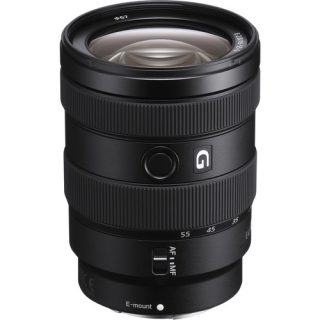 |
The best quality APS-C lens in Sony’s lineup. It is sharp corner-to-corner, even wide open. It offers a viable alternative (in terms of image sharpness) to owning three wide aperture primes for those users who don’t want to be continually changing lenses.It does not have Optical Image Stabilisation (OSS) so is best suited for A6600 owners if you intend to hand-hold the camera in low ambient light. If OSS is important I would recommend the E 18-135
|
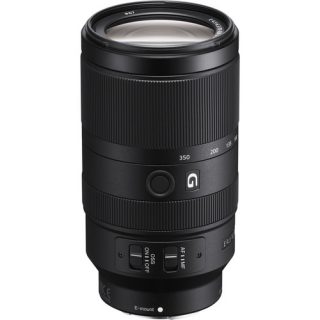 |
If you need maximum reach from a telephoto zoom is not too large and not too expensive the 70-350 G is your best option. It is fast focusing and very sharp. It’s maximum aperture beyond 200 mm is f/6.3 so for those who prefer to keep the ISO lower you may want to consider the FE 70-200 F/4 instead.
|
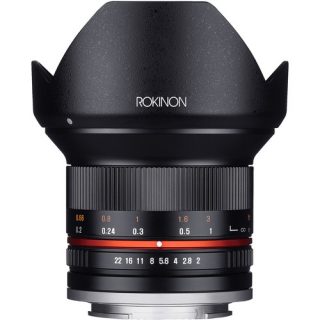 |
Rokinon 12mm f/2.0: A very sharp wide-aperture prime lens that is used for landscapes and Astro photography. This lens is Manual Focus has no Optical SteadyShot so the reason it is in my kit (I also own the SEL 10-18 F/4) is because of its wide f/2.0 aperture which enables me to keep the ISO low when shooting Astro (1600 instead of 6400).
|
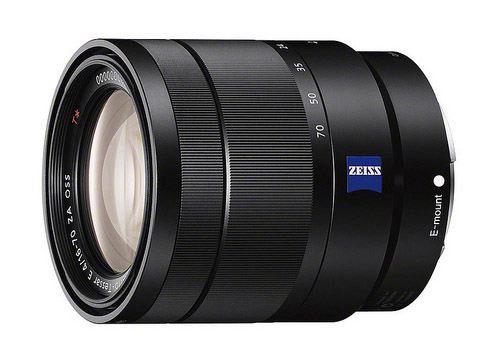 |
SEL18135: This is now my primary lens for my A6400 camera. It has a 7.5X zoom range (28-202 equivalent). It is an exceptionally sharp lens across the focal range and is much lighter and smaller than Nikon and Canon equivalents. It is also smaller and lighter than Sony’s own E 18-200 and E 18-105 PZ zoom lenses. An album of high-res images captured with this lens can be viewed here: https://flic.kr/s/aHsmcNrBhU |
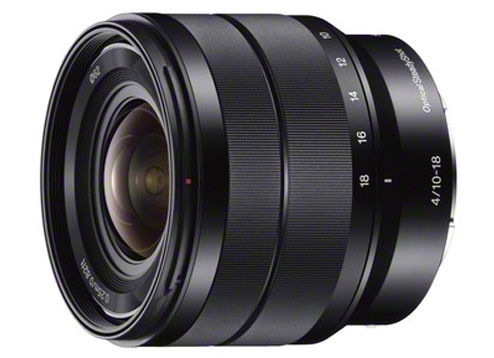 |
SEL1018F4: This lens carries neither the Zeiss or G badge that is used to denote Sony’s highest quality lenses, but the SEL 1018 F4 is one of Sony’s finest. It is both sharp and free from any excessive distortions the can plague some ultra wide-angle lenses. It also has exceptional coverage and can be used on the full-frame A7 cameras between 12 and 16mm with the crop mode turned off! There is a little distortion in the corners when shooting in this fashion with an A7 camera (not recommended for pixel-peepers), but this lens may present a very lightweight alternative to the FE 1635 F4 for many users. I have used this lens to shoot a lot of time-lapse sequences, where shooting in crop mode is an advantage when you don’t need the full megapixel count that the full frame sensors provide. With crop mode switched on you are still capturing 10-18 Megapixel stills (more than enough for 4K movies) using the A7II or A7RII cameras. It has a 62mm filter thread for those photographers looking to purchase an ND filter for long exposure work. An album of high-res images captured with this lens can be viewed here: https://flic.kr/s/aHsk9EeVkk |
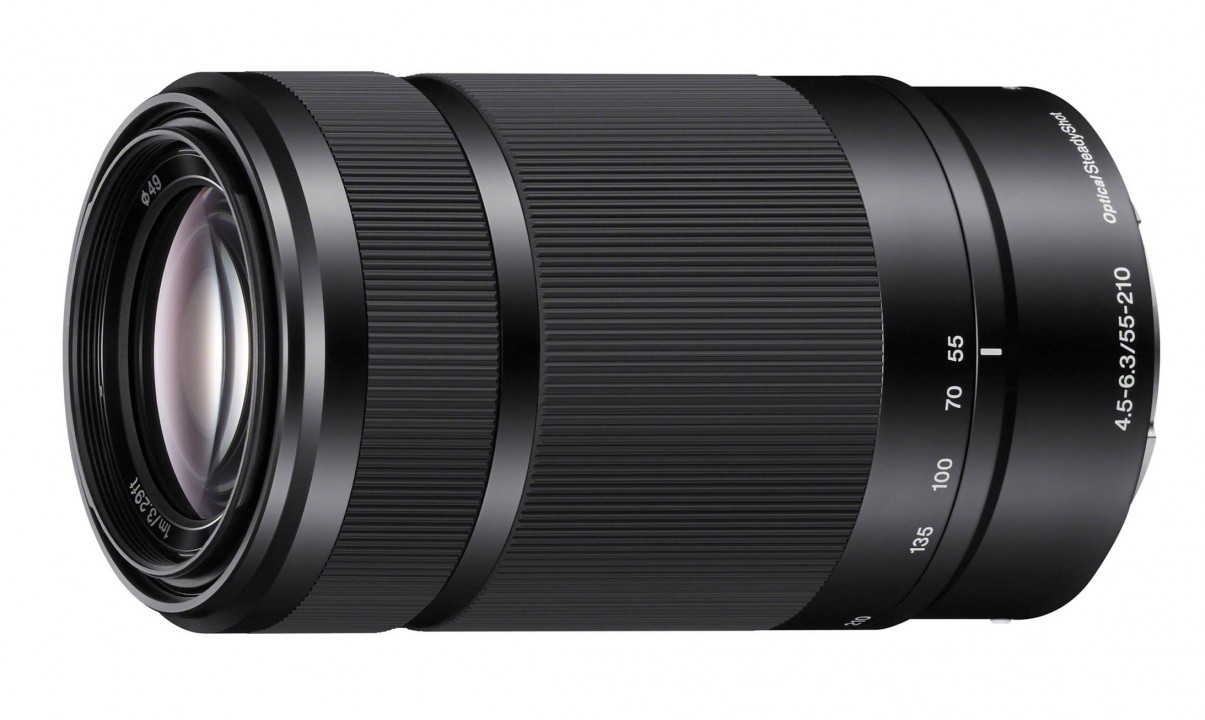 |
SEL55210: This is Sony’s original long telephoto zoom available for the APS-C Alpha E-Mount cameras but, despite its diminutive size, its a very sharp lens with a very useful focal range. The 210mm full frame equivalent is 315mm, so it is long enough for everything except birds for most photographers. This lens has only two drawbacks. When zoomed to the longer focal lengths the widest aperture available is f/6.3, and for sports action this lens can’t keep up with the very fast AF speed that the A6000 series cameras are capable of. If you see these as limitations for your style of photography you would be recommended to check out either the FE 70200 F4 lens or E 70-350 G instead. If, however, your prey is not running at break-neck speed, and the level of ambient illumination is reasonable, it is very difficult to find fault with this lens (especially given its weight and price point). An album of high-res images captured with this lens can be viewed here: https://flic.kr/s/aHsk9JGwGN |
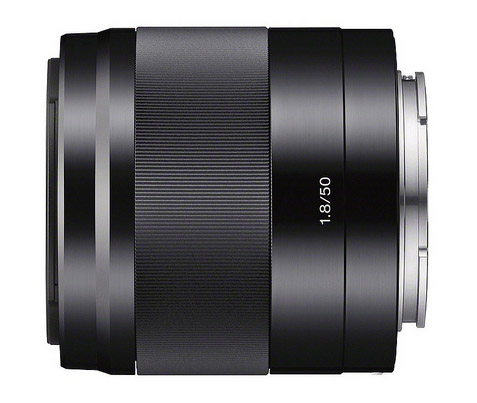 |
SEL50F18: If you are using the three zooms above, you could be given to thinking you have all the lenses you need for a lightweight APS-C system. I will, however, often carry the FE 55 f1.8 to give me the capability to shoot shallow depth of field portraits. If the cost of this lens is prohibitive, and you don’t own an A7 series camera, then the SEL 50 f/1.8 is a cost-effective alternative. On an APS-C system the 50 mm lens becomes a useful 75mm portrait lens. It is also pleasingly sharp (although not as sharp as the FE 55). An album of high-res images captured with this lens can be viewed here: https://flic.kr/s/aHskamSWfX |
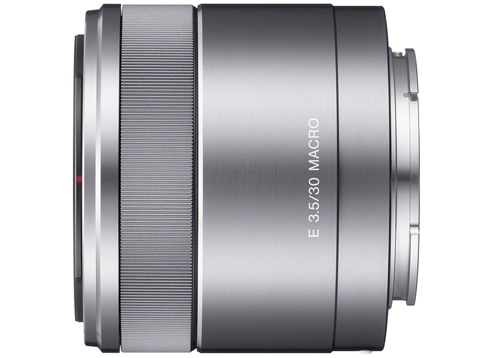 |
SEL30M35: This is the small lightweight Macro lens for the APS-C system. I use this lens primarily for recording movies of products that I am holding or the back of the LCD screens. It has also captured a couple of my favourite Macro shots of bugs in my back garden. Perhaps not as useful as the 90mm FE Macro, but then it comes in as an absolute featherweight – which makes the APS-C system a very attractive proposition for some photographers. An album of high-res images captured with this lens can be viewed here: https://flic.kr/s/aHsk9HVtxn |
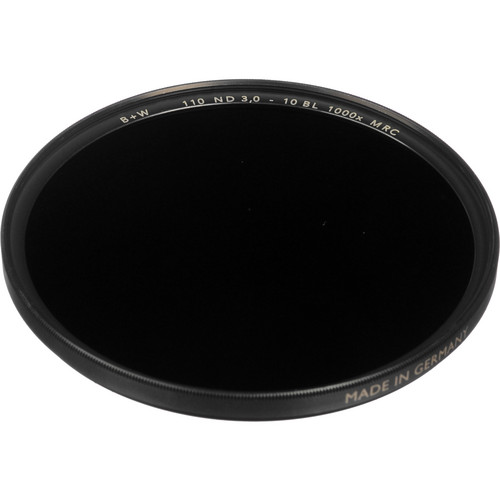 |
The only filters I use on a regular basis are ND filters. I prefer to use a fixed density filter (rather than variable) so have chosen a 10 stop ND filter for my SEL1018 F4 that will allow me to create long exposures (30 seconds and longer) at dawn and dusk. The B+W 3.0 extends the shutter speed by approximately 10 stops, e.g. a 1/8-second exposure without the filter takes just over two minutes to expose with the filter attached. |
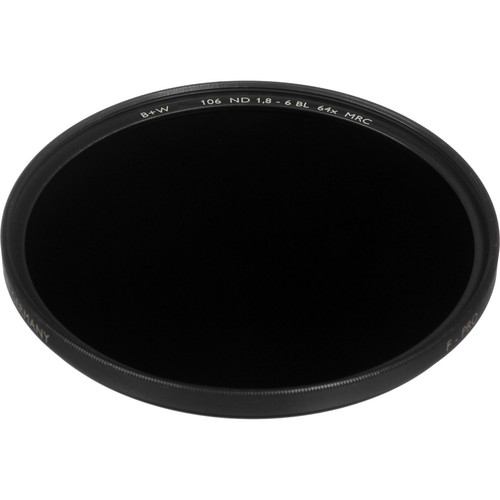 |
The B+W ND 1.8 is a 6-Stop ND filter with a 49mm thread for my SEL50F18 lens that allows me to shoot wide open in bright ambient conditions while maintaining a 1/50 second shutter speed, e.g. If the ambient light requires that I film at f/16 to achieve an appropriate exposure while maintaining a 1/50 second shutter speed, if I then attach the Pro ND 64 filter I will be able to open the aperture to f/2 or f1.8 in order to blur the background and isolate my subject.
|
 |
Because of the flexibility of Sony’s One-Mount system (the same E-Mount across their APS-C, full-frame mirrorless cameras and Pro Camcorders) I often use four full-frame lenses on the Sony APS-C cameras. These are the:
These four lenses are small fast-focussing and very sharp when used on the APS-C cameras and also offer the advantage that they can be used on Sony’s Full frame cameras if required. Gallery of images captured with Full Frame (FE) lenses on APS-C bodies. |
Tripods
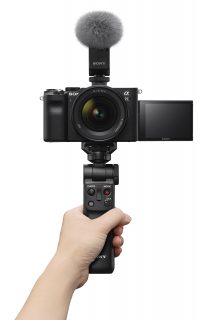 |
Sony Bluetooth Grip – GP-VPT2BT
This grip offers Bluetooth support so that you can start and stop movies, take photos and zoom (Power Zoom or Clear Image Zoom). It also doubles up as a table top tripod and weighs just 215 g or 7.6 oz |
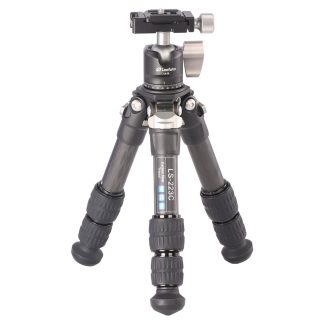
|
A premium quality short (and very light) carbon tripod that will fit into my messenger bag. Only suitable for low vantage points (which is how I shoot 90% of my landscape images). This was an upgrade to my MePhoto Daytrip tripod and weighs in at just 708 g or 1.65 lb including the LH-25 Mini Ball Head. This is compared to the 800 g or 1.8 lb of the MePhoto Daytrip. It also has a better build quality. |
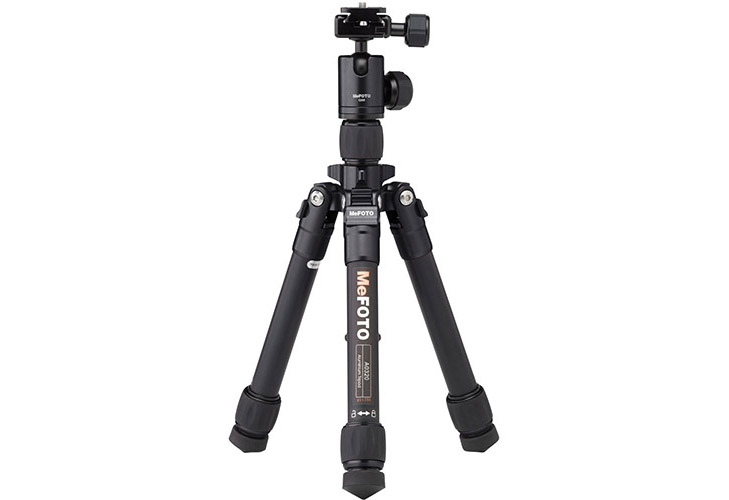 |
MePhoto Daytrip: Small but sturdy. It can be folded down to just 9 inches (smaller than this photo would suggest). The extending legs are useful for levelling the tripod on uneven ground. The ball head uses a mini Arca Swiss head that requires an Allen key to tighten the mount onto the camera. It comes with a carry bag and Allen keys but I often swap out the head for a full sized Arca swiss head or Manfrotto head. Interestingly, the carry bag takes the tripod with a larger head and without having to fold back the legs. Although it is not made from Carbon Fibre and is only a few grams lighter than the Sirui T-025X (see below). I often carry this tripod as it is the only one that fits inside the small ONA or Lowepro Passport messenger bags I own. Although small, I find myself mostly shooting landscapes close to the ground with an ultra wide-angle lens to include the foreground. I often see other photographers working with their tripods fully extended just because they think they should be standing to take photos. Even though these tripods are probably double or triple the weight and are no less study when fully extended.DayTrip Tripod Kit (Black) from B&H USA |
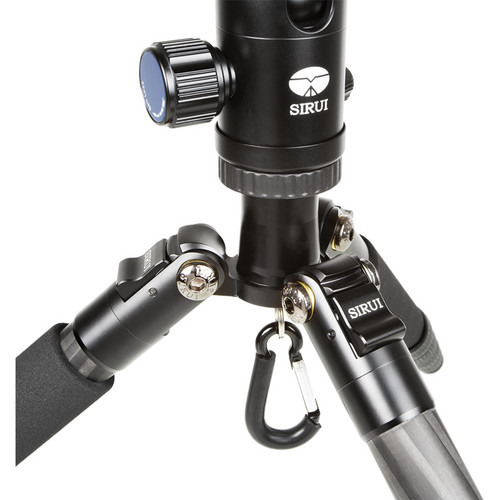 |
Sirui T-025X: If you are looking for a well-built carbon fibre tripod that comes in under 1KG (including the ball head) and folds down to under 12 inches then you will invariably end up looking at the Sirui T-025X. It is amongst only a handful of contenders. Fully extended – it is possible to work standing up, but in most cases this tripod is positioned much closer to the ground.
T-025X Carbon Fiber Tripod with C-10X Ball Head from B&H USA |
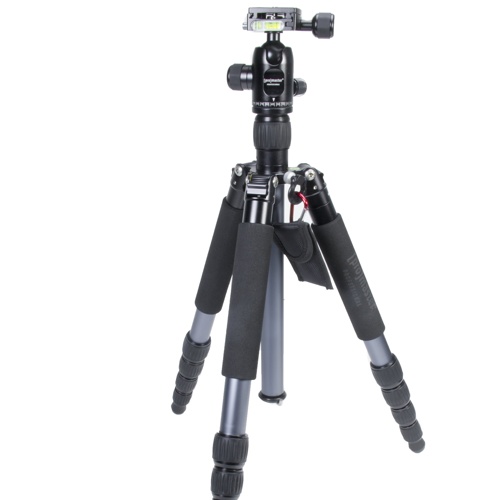 |
ProMaster 525C: The C stands for Carbon as there is a none-carbon version of this tripod. This tripod is more substantial than the Sirui and you don’t have to fold out the legs to begin working. The Ball head is good quality and you can mount the plate to the bottom of the camera without the use of an Allen Key. I currently use a Peak Design sling strap that uses an Arca Swiss plate as the attachment point for the strap (included with the sling strap) so switching from camera strap to this tripod is very quick affair. I also like this tripod because one of its legs detaches and becomes a monopod.
ProMaster 525C |
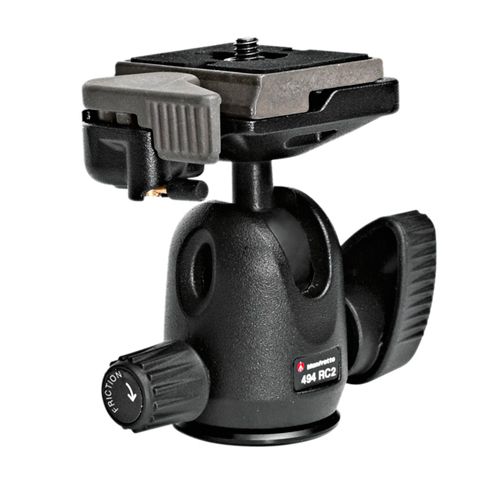 |
Manfrotto 494 RC2 Ball Head: I like Arca swiss, but I have to admit to liking Manfrotto tripod heads more. It’s all about quick release – which the Arca heads don’t have. Some of the Arca heads are very slow release if they require an Allen key or 5-Cent coin to remove them from the camera body. This 494 RC2 Manfrotto ball head is as small as I am prepared to go, but still strong enough to be support an A7RII camera with a heavy wide-aperture/ zoom lens.
|
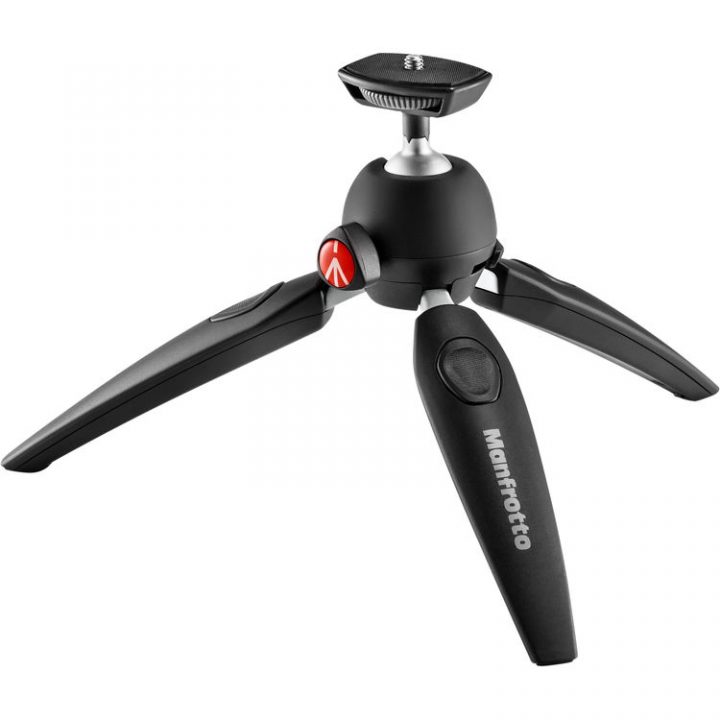 |
Manfrotto Pixi Evo: This is the larger of the two Manfrotto table-top tripods. Although classified as a table-top tripod, due to its short stature and light weight (9.4 oz or 267 g), I use it to capture the majority of my landscape images. I like positioning the camera close to the ground so the scene includes the foreground and there is no real reason to leave home without it. I use it with my ultra wide-angle primes and also my 16-70 and 24-105 zoom lenses (position the lens directly over one of the legs and extend this leading leg to balance the weight of the lens). |
Camera Bags
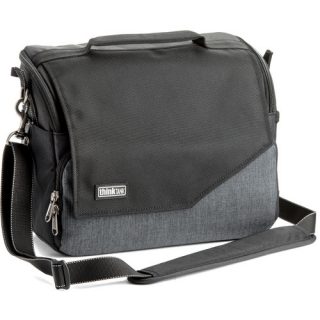 |
Thinktank Mirrorless Mover 30i
This is a small lightweight messenger bag that I use to carry my Alpha 7C with kit lens, FE 20mm F/1.8 and FE 85 F/1.8. There is room to carry an iPad and/or the Leofoto MT-03 tabletop tripod or Sony Bluetooth Grip and Microphones. |
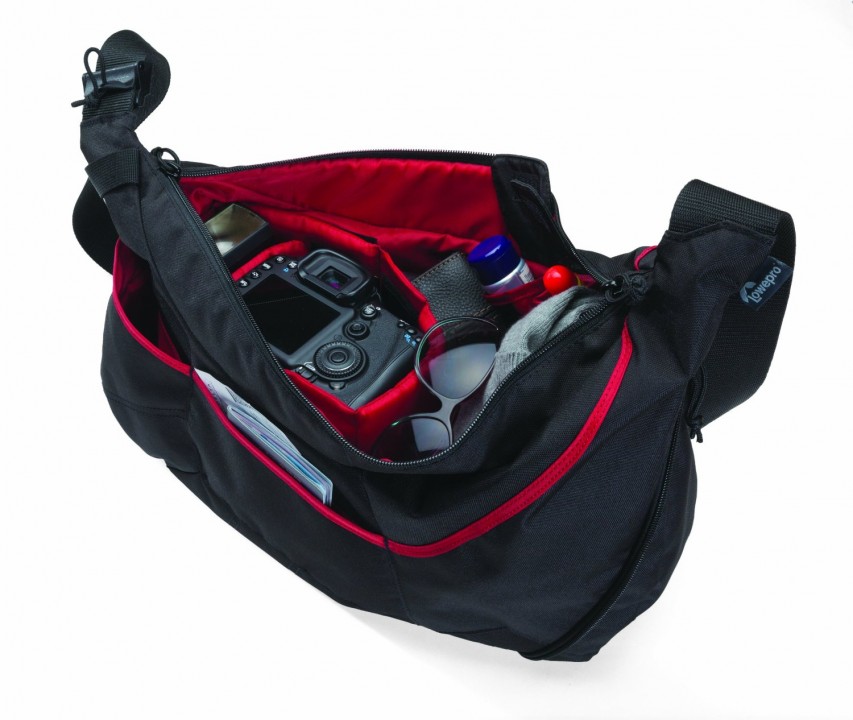 |
Lowepro Passport Sling: This is an extremely small and light messenger bag which is deceptively spacious when you start packing your gear into it. There is a padded section with two compartments and at the opposite end a space that can be expanded via an external zip to become quite cavernous and can accomodate the FE 70-200 F4 zoom or the MePhoto Daytrip tripod. There are two small pouches that will take spare batteries and pockets on the outside that will accomodate a drinks bottle, maps or loose accessories. The main advantage of this bag is that it collapses almost flat. This means it can be packed into a carry-on flight bag or checked luggage when traveling. The only downsides to this bag is that it provides minimal protection to any gear not in the small padded section and that the opening won’t stay open when you are swapping lenses over as the bag has no rigid structure to it. When carrying the FE 70-200 F4 I would put this this into an additional padded lens bag. |
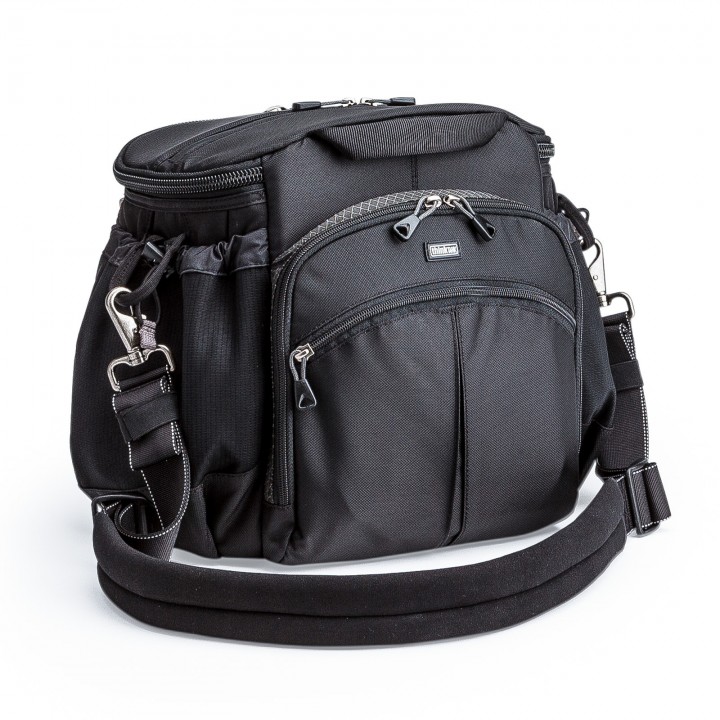 |
Think Tank Speed Racer V2: This messenger bag is my largest messenger bag and is deep enough to carry an A7RII with an attached FE70200F28GM soared vertically in the bag with room enough for at least another 3 or four lenses. It will comfortably carry 7KG of camera gear if you are looking for a bag that can be used to carry all of your carry-on gear for International air travel. Go to this video tutorial to check out my review of this bag: https://youtu.be/7PbcwMwzeZs
|
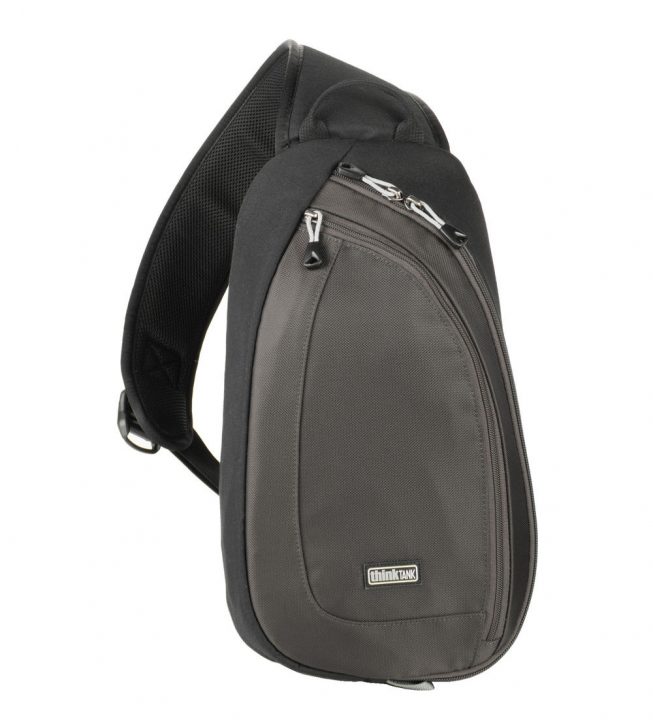 |
Think Tank TurnStyle 10: This bag is one of the latest small camera bags that I own. Although it is s all bag if I take out the internal dividers it can accomodate my Sony A9 with FE 100-400 GM OSS. I have adopted this workflow when I am working with the A7RIII and a prime or the FE 4/24-105 G Zoom. If I need quick access to some fast moving action I can park the A7RIII on my Peak Design camera clip and swing the sling bag from my back to my side to gain quick access to the A9. It’s a workflow for those photographers who would prefer to work with two camera bodies to reduce the number of times they are having to change their lens. I have also worked in this manner using the A6500 with E 18-135 lens and the A7RIII with the FE 1.8/85 and a second wide aperture prime in the TurnStyle using one central divider. If you are using it is your only camera bag it would be possible;e to travel with one camera, three small lenses and a small tablet. |
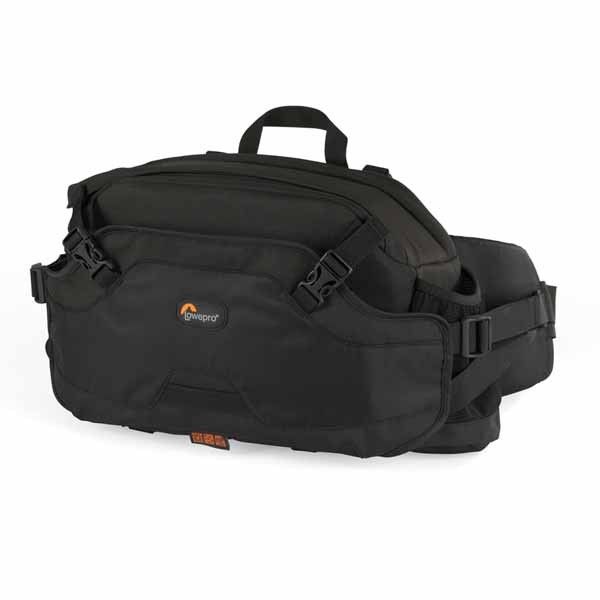 |
Lowepro Inverse-200 AW: This bag is not that much more spacious than the LowePro Passport Sling but it is a bag that can be loaded up for a full day shoot. The bag looks a lot bulkier than the Passport Sling but this is due to the semi-rigid structure that the ample padding provides. The main feature that drew me to this bag (and why I still use it) is the belt that can remove some, or all, of the weight from the shoulder strap. You can load this bag up with 6KG of gear and comfortably carry the bag all day. The bag is also able to carry a small carbon fibre tripod such as the ProMaster 525C or Sirui T-025X which is attached via straps underneath the bag. The bag has small pockets in the opening flap for storing spare batteries, external pouches for carrying a drink bottle (or two) and a rather strange flap that I have used to carry a jacket or jumper that I have removed when the day warms up. It has been in the Lowepro lineup for some time but has recently disappeared from their own site. The closest bag to this one now appears to be the Photo Runner 100. |
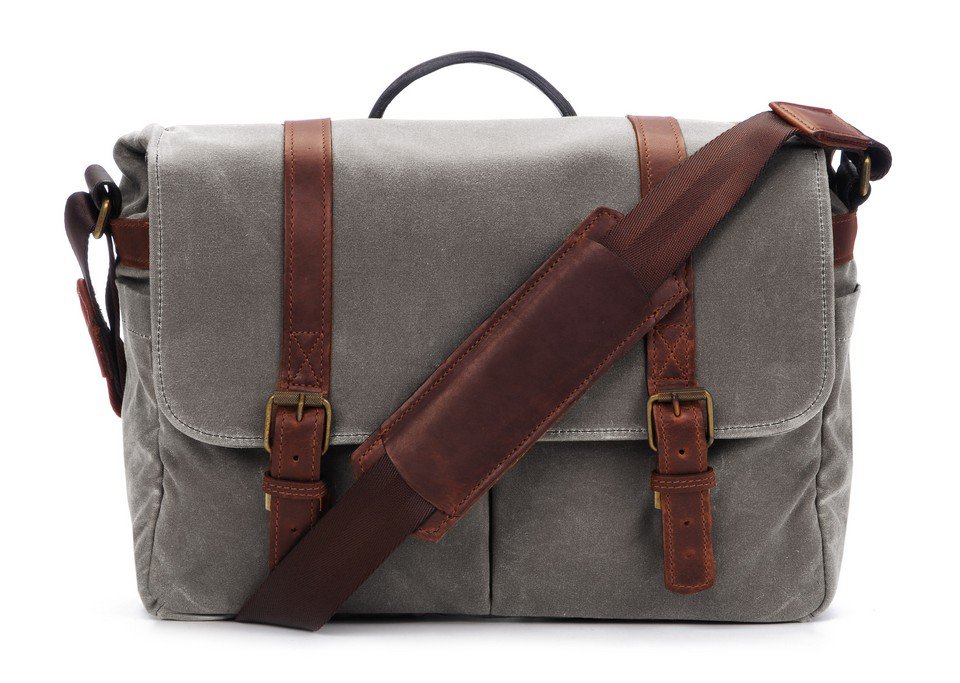 |
Ona Brixton Messenger: I was immediately attracted to the Ona Brixton when I first saw it. It shouts quality but doesn’t immediately shout ‘Im a camera bag’. It is spacious enough to accomodate quite a bit of gear (deep enough for the FE 70-200 F4 or MePhoto Daytrip an A7RII camera with lens attached and another large lens. It’s front pockets will take some additional filters and batteries and the rear padded section is large enough to accomodate a 13-inch MacBook Air. Admittedly, with this much gear you wouldn’t want to be carrying the bag for more than an hour, as the shoulder strap is not that broad and there is not option to attach a belt strap to alleviate some of the weight from your shoulder. As the two bags above do not accomodate a laptop this messenger really comes into its own when I am out and about giving talks and need to take my MacBook. |
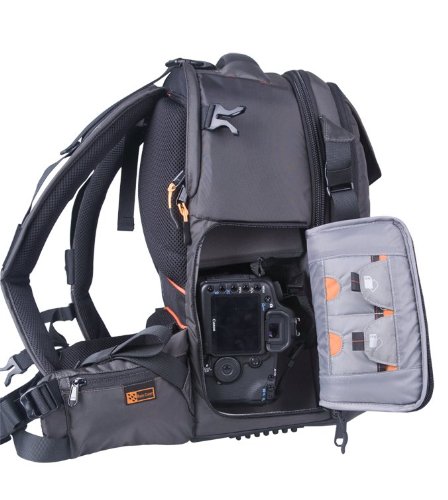 |
Benro Ranger Pro 500N Backpack: This used to be my bag of choice for carting my Sony A99 and heavy f/2.8 zooms around prior to going mirrorless. It’s a reasonably light bag and I still use it when I need to carry more than 7KG of mirrorless gear to a photo-shoot. It has lots of ways of getting into to access a camera or lens without having to open the entire bag (as seen in illustration), and also has room for a 15 inch MacBook Pro + external means for carrying a large tripod and drinks bottle. |
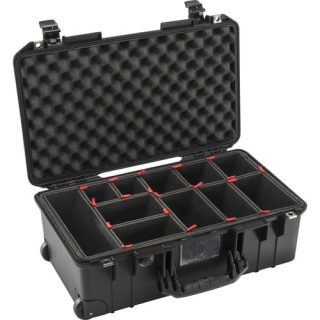 |
Pelican Air 1535: I use this case if I have to check camera gear when flying. The case is watertight, crushproof, dustproof, and optimized for travel. This version of the case has the customisable TrekPak Insert (no wasted space). The case features an extending trolley handle, and wheels. |
Microphones
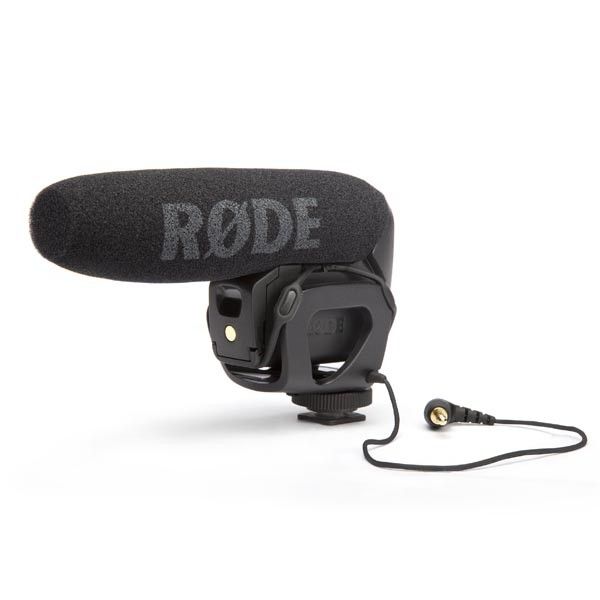 |
Rode VideoMic Pro: This is my shotgun microphone of choice that mounts to the hotshoe of the A7SII camera and connects to the audio-in port of the camera. It seems this microphone is used extensively by many photographers, and for the price, is an absolute steal for near-professional quality audio. I say ‘near’ because if you really value audio quality then you will take a look at Sony’s XLR-K2M unit that ticks all of the boxes – even for audio engineers. If you value audio quality, which you should, then you definitely want to step it up a notch or two and at least invest in this Rode microphone. The only downside to this microphone is that it uses a 9-Volt battery instead of the ore accessible Double-A or Triple-A batteries and is a little bit fiddly to change. |
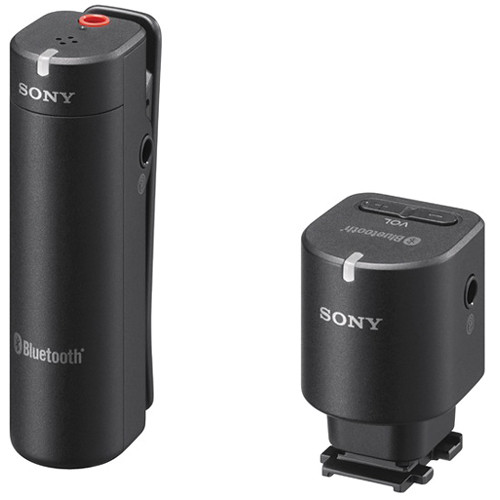 |
The Sony ECM-W1M Wireless Microphone fits the Multi-Interface Shoe and comprises of a transmitter and a receiver. They communicate wirelessly with each other via Bluetooth. I use this as a livelier microphone when recording my voice. Positioning the microphone close to the person speaking mens that ambient noise or background noise is minimised. The audio is recorded directly to the movie file so does not have to be synchronised in post. |
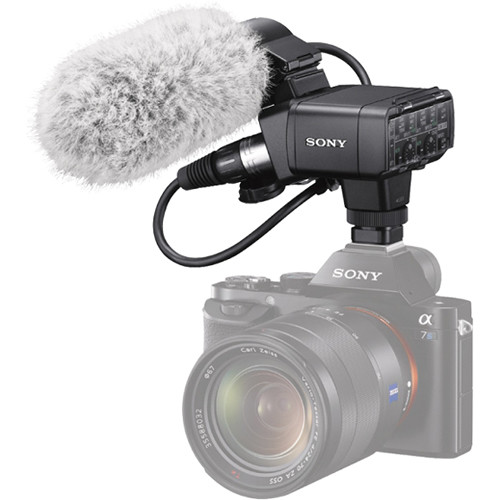 |
For videographers wanting professional audio they may need to invest in the Sony XLR-K2M XLR Adapter Kit with Microphone. It features a 2-channel XLR adapter box with independent controls that provide recording level adjustment, attenuation, and wind noise reduction. The built-in mic holder lets you mount the included ECM-XM1 shotgun microphone. Also included in this kit is a fuzzy wind screen and a zippered carrying case. |
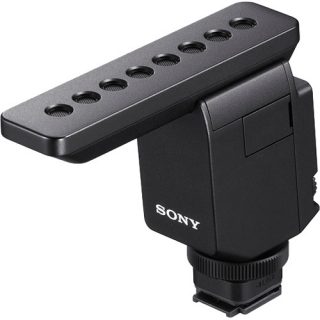 |
Shotgun Microphone that records digital audio for use with my A7RIV, A7C and A99II cameras.
|
Power
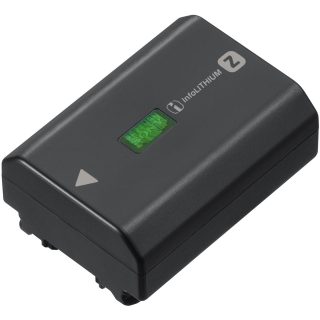 |
I will typically travel with at least two Z-series batteries (NPFZ100) + 1 Battery charger (BC-QZ1) | |
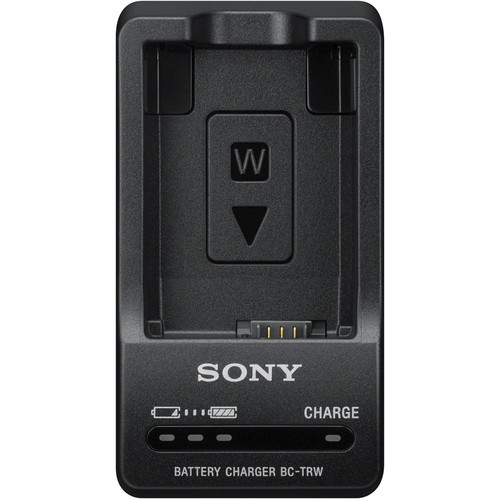 |
Even though you can charge an A7 series battery in the camera, it is wise to carry an additional battery charger when traveling so that you can charge two at the same time. The BC-TRW is one of a few Sony Battery Chargers for the FW50 (W-Series) batteries. It features a retractable plug for easy storage and travel. The charger runs on 100-240VAC power to enable use all over the world. The BC-TRW also has an indicator light that displays charging status.
Note > Select the BC-QM1 battery charger if you live outside of the USA and require a battery charger that can charge 5 different Sony series batteries and that also has a quick charge function. |
|
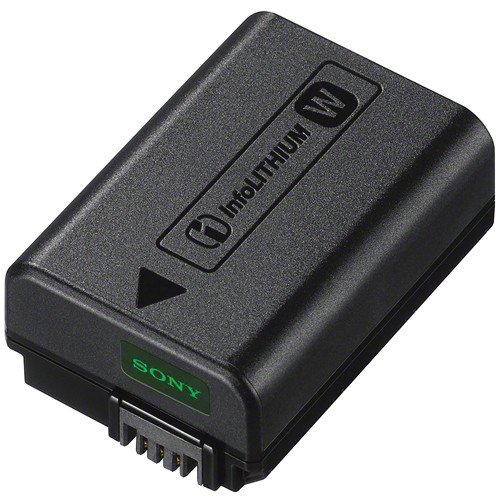 |
I will typically travel with at least four spare batteries and will generally keep one of these in my pocket. I can get through 2 or 3 a day if I am not shooting movies. Given that it only takes 5 seconds to change the battery over you should never be caught short of power. | |
|
|
||
Remotes
 |
The RM-VPR1 Remote Control with Multi-terminal Cable for Select Sony Cameras and Camcorders from Sony is a wired remote commander that allows various remote control operations to be performed without handling the camera, therefore eliminating camera shake and providing self-portrait and other control applications. When using the RM-VPR1 with most Sony cameras, you are able to control shutter, optical zoom, digital zoom and bulb function. You are also able to control video recording. The remote is also functional with the Alpha a99, a77, a65, a57 and a37 cameras but only for photo (not video) functions. Both a multi-terminal cable and remote terminal cable are included for comprehensive compatibility. | |
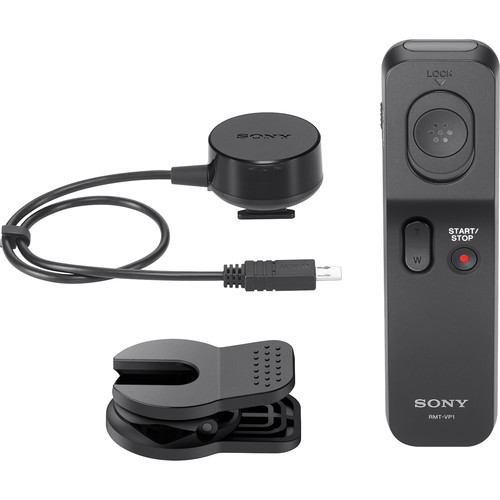 |
Operate your camera or a group of cameras remotely using the RMT-VP1K Wireless Receiver and Remote Commander Kit from Sony. The multi-function remote control is compatible with Sony cameras that are equipped with a multi terminal and has further compatibility with MI-show and DI products. For video or still use, the remote has four available modes: Half-push, Release, Bulb rock, and REC/Zoom. The IR receiver has 360° coverage. |
|
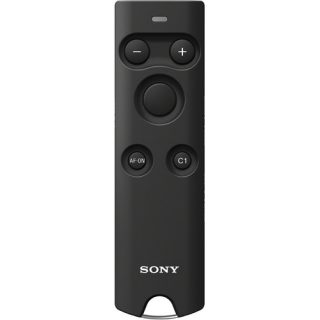 |
RMT-P1BT Bluetooth Remote for stills and movie capture. A red light appears when recording and the C1 key can be used to access whatever is assigned to the C1 key o the camera. If you have an older model Sony camera check it is compatible with your camera before ordering.
|
|
Accessories
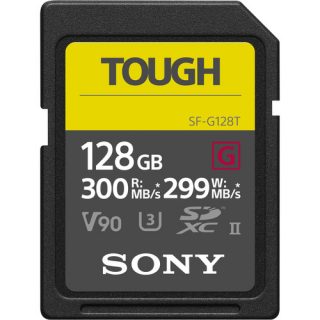 |
The cards I use for capturing fast action at 20 frames per second on my A9 and A9II cameras | |
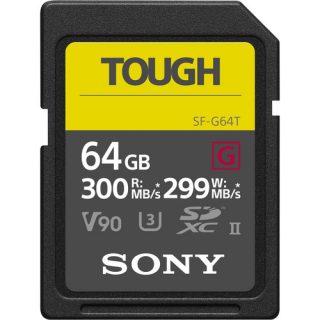 |
The cards I use for capturing ultra high resolution Raw files on my A7RIV | |
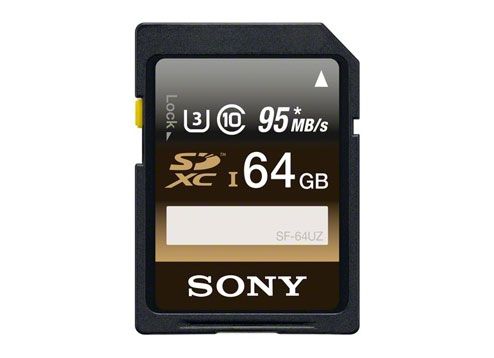 |
The cards I use on my A6000 series cameras.
I switched from using SDHC cards to SDXC cards so I can shoot movies using the superior XAVC-S video codec (less compression than the older AVCHD codec). The speed of this card (95 MB/s read and 90 MB/s write) allows 4K capture. I will often carry 4 or more of these cards when travelling so that I don’t have to reformat the cards while I am travelling. |
|
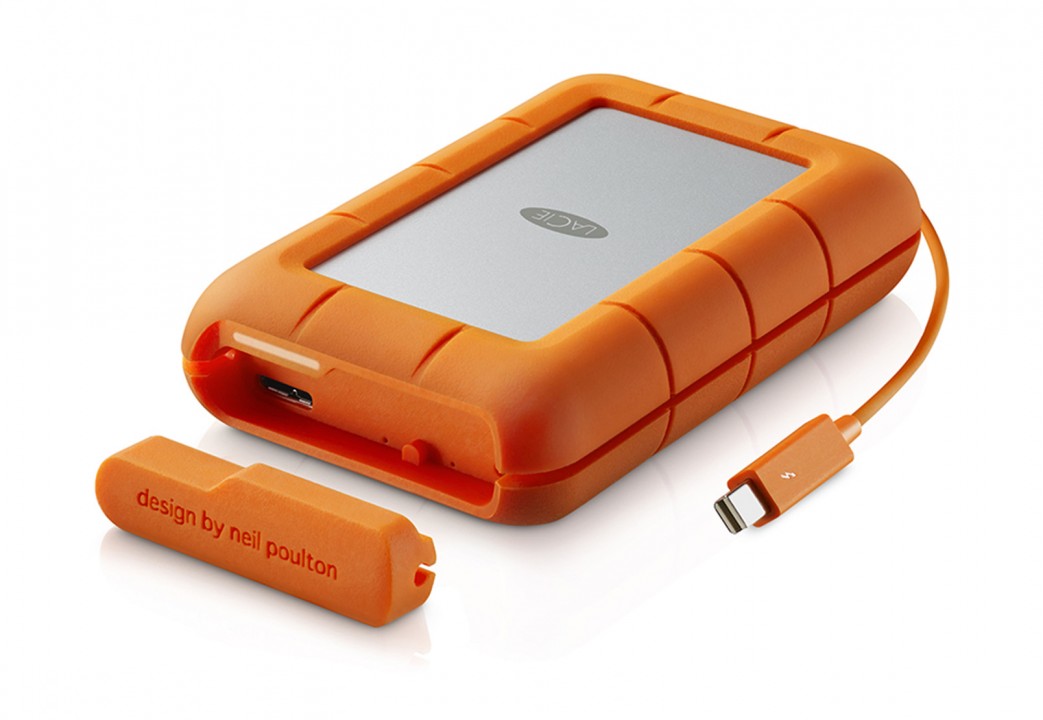 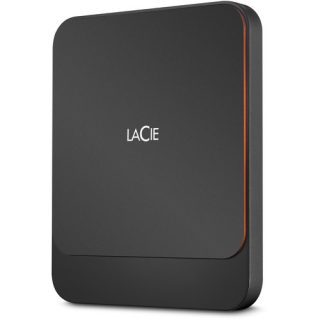 |
The LaCie Thunderbolt/USB 3 Raid Drive is an excellent travel companion. It has two 2-Terabyte drives that can be set up in one of two different modes. If you select safety over speed by choosing the ‘Mirrored Raid’ option you effectively create a safe environment to store all of your precious travel photographs.
1TB SSD for those who want to travel with less weight. You won’t have the piece of mind that a RAID offers but if you keep a second set of image files on the computer’s hard drive or the memory cards then the weight saving is useful. |
|
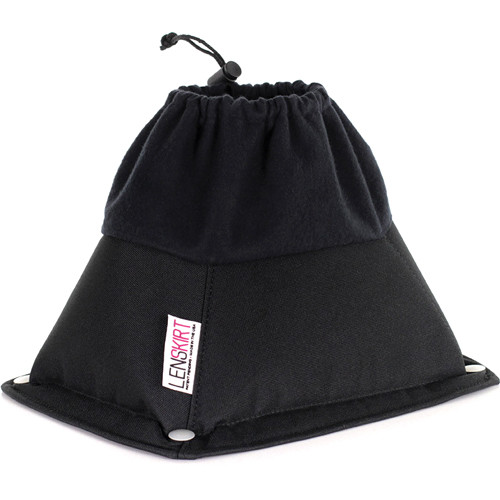 |
The LENSKIRT is a portable, flexible lens hood that features suction cups for helping to block internal environmental reflections on glass while shooting. This allows you to shoot photographs and video through glass without worrying about lights, flashes, or you showing up in the final image. It opens up with a drawstring in order to fit securely around your lens. The standard size is compatible with lenses up to 8″ in diameter, and the 9 x 10″ opening will work with lenses as wide as 15mm. The Extra Large has an opening that measures 12 x 13 inches.
|
|
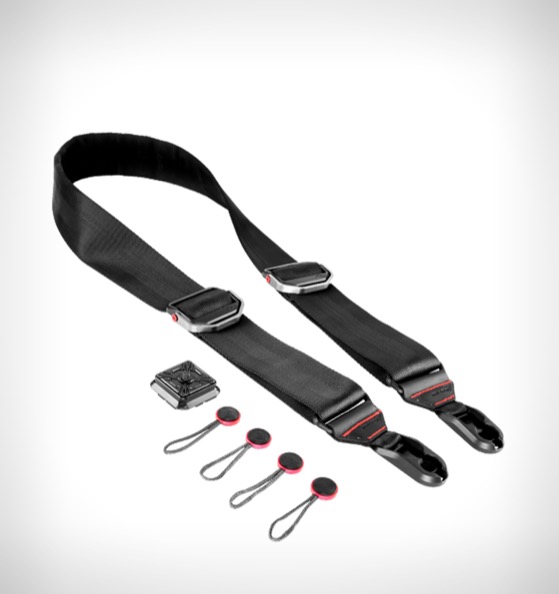 |
Peak Design Slide Camera Strap: This is my third sling strap (the previous being an Artisan and a Joby) and it is currently my favourite. It has a broad strap, the length can be adjusted quickly, and can be attached or detached from the camera body in a matter of seconds with its quick-release system. This ‘Slide’ strap includes an Arca swiss tripod head and the sling strap can be attached to either the camera strap lugs or the Arca mount. This means the camera can go from strap to tripod in no time at all. A very well thought-out system. Peak Design seem to be a company to watch, as they do extensive research into what photographers need, and want (check out their new messenger bag). | |
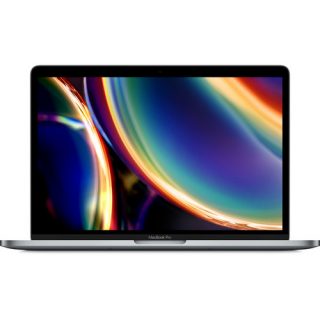 |
A very light and portable laptop computer that does not cut any corners in features or performance. I would recommend purchasing this high spec model that comes with the i7 processor and the 1 TB GB SSD (Flash) drive.Preorder from B&H USA | |
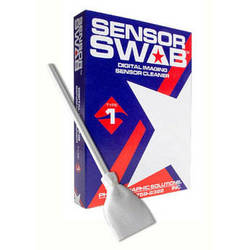 |
Sensor Swabs for removing dust spots from your sensor. Choose type 2 for APS-C sensors and Type 3 for Full Frame Sensors.Sensor Swab ULTRA (Type 3, Box of 12) from B&H USA | |
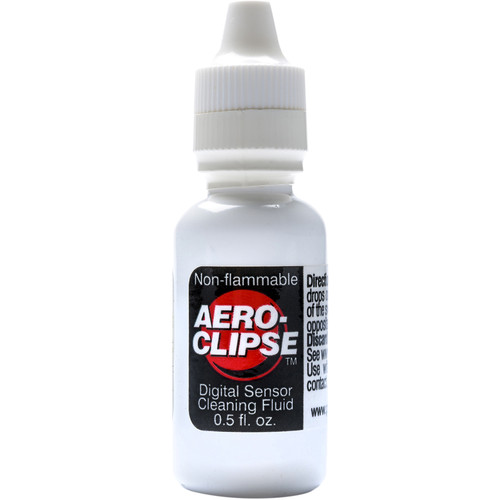 |
This is a streak free solution to be used in combination with a Sensor Swab. Quick and Effective cleaning for your sensor. You can check to see if you have dust spots on your sensor by shooting a sheet of white paper at f/22 and with the exposure set to Auto.
|
|
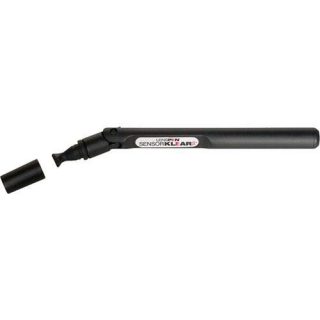 |
I use this pen to remove stubborn spots. I order several at a time as I dispose of them when I have used them a few dozen times.
|
Flash/Speedlights
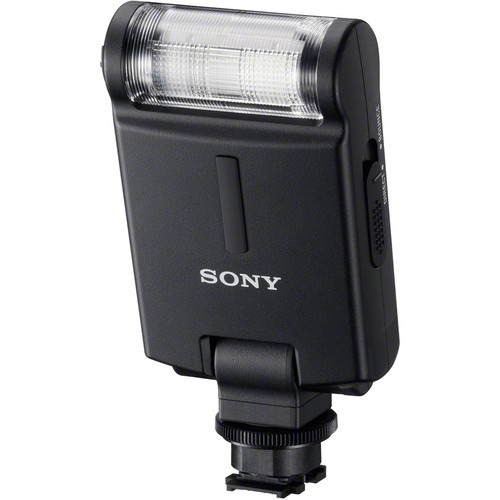 |
HVL-F20M External Flash: The smallest of Sony external flashes is deal for those looking to add a little fill light to their images or to use as a wireless TTL infrared controller for off-camera flash units without adding too much weight to their gear bag.
|
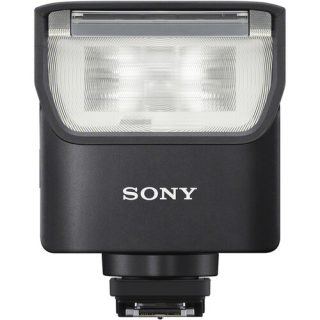 |
HVL-F28RM External Flash: This unit is well-suited for use on mirrorless cameras for those who are looking for a lightweight on-camera lighting solution or radio commander for other off-camera RM flash units. |
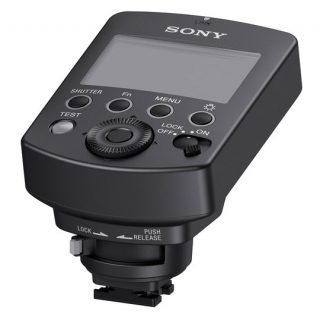 |
Sony FA-WRC1M Wireless Radio Commander: Sony’s answer to triggering its HVL flashes off-camera. t is best used in conjunction with the HVL-F45RM flashes which have built-in radio receivers but can also be used with any other flash if you purchase a seperate Radio Receiver
|
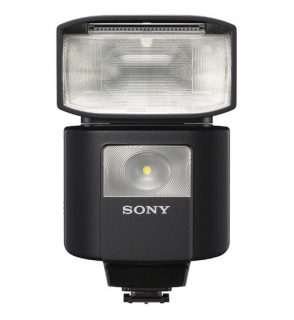 |
HVL-F45RM External Flash: This is now my preferred flash for the Sony E-Mount cameras, it is light portable and powerful. It also has the added advantage that it can be controlled via Sony’s Radio Commander rather than another HVL flash.
A movie of me using this flash can be viewed here: https://youtu.be/JtLnp5yQ7jE |
One thought on “What’s In Mark’s Bag?”
Comments are closed.
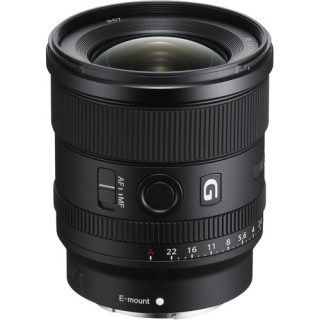
Pingback: Sony Tidbits…(Milvus 100mm tested on A7rII by Planet5D) | sonyalpharumors